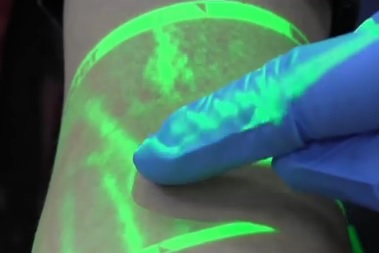

Vein visualisation technology uses near infrared technology to project an image of the vein onto the skin. Veins have a lot of deoxygenated haemoglobin that absorbs near infrared light and the device is able to use this information to project the image. The machines have settings to manage individual differences.
Is there a medical reason some people have hard-to-find veins? Or is it just a case of bad luck?
There is great variability in anatomy from person to person. Some people have very easy to find veins where as others have difficult to find veins. In the case of most blood donors, it really is luck of the draw.
There is a focus on the trial getting young people in - is that to try and create life-long donors?
It is important for the Blood Service to recruit young donors in order to have a sustainable blood supply for the future. We are interested to see if this technology improves the donation experience in young people and whether that increases their likelihood to return to make repeat donations.
If it's a success, what's the next step? How far off are we from seeing the technology roll out across donor sites nation-wide? And is it financially feasible to do so?
The study will help the Blood Service to decide on whether the technology should be rolled out for use. There are a number of factors that need to be considered such as the safety and efficacy of the devices, their impact on donor retention and the cost of the technology. When the study is completed we will have a lot more information to guide these decisions.
Does the Red Cross own the technology, and would it therefore be in a position to monetise it by leasing it out?
No the Blood Service doesn’t own the technology. We are trialling two different devices available from Australian providers.
This is great, but is it really safe?
That is a really important question and an important reason to do this research. The light should not be directed at the eyes and the manufacturers’ advice is to use caution in people with impaired blink reflexes. The technology is used in other clinical and hospital settings and has been proven to be safe. The Blood Service would not trial this technology if they thought there was a risk to the safety of our donors. The results to date have been closely monitored and it does appear safe.